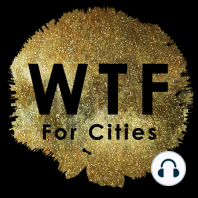9 min listen

044R_Measuring community disaster resilience in the Latvian context: an apply case using a composite indicator approach (research summary)
044R_Measuring community disaster resilience in the Latvian context: an apply case using a composite indicator approach (research summary)
ratings:
Length:
11 minutes
Released:
Apr 4, 2022
Format:
Podcast episode
Description
Summary of the article titled Measuring community disaster resilience in the Latvian context: an apply case using a composite indicator approach from 2016 by Maksism Feofilovs and Fancesco Romagnoli presented at the International Scientific Conference “Environmental and Climate Technologies” in Riga, Latvia.
Since we are investigating the future of cities, I thought it would be interesting to investigate resilience from the community perspective. This article investigates community resilience to man-made and natural disasters based on a previously developed framework in the case of Latvia.
You can find the article through this link.
Abstract: Despite a growing and considerable interest and implementation of disaster resilience framework methods in research, policy programs and engineering design, metrics and standards for a quantitative measuring of resilience are still an open issue. Recent literatures on hazard and disaster show that the resilience concept represents a guideline toward a valuable hazard risk management and mitigation. For the Latvian context this also represents a beneficial approach for the implementation of policy strategies based on (semi)quantitative framework aiming to enhance resilience within communities in order to properly and most efficient spend a limited availability of funds. In fact man-made and natural disasters are usually preceded by periods where communities develop toward increasing risk states until a loss occurred due to a specific disaster event. In regard to this aspect this study, principally based on the definition of the Community Disaster Resilience Framework (CDRF) developed by Mayunga, is aiming to evaluate the level of community resilience to disaster at the Latvian national level for a specific set of social, economic, human, physical, and environmental indicators. The method implements the concept of a composite-based, multi-criteria analysis aiming to measure baseline quantitative characteristics of the communities under investigation to potentially further enhance resilience within specific actions plans and/or policy mechanisms. The results are applied to the Latvian context and provide a tool to assess the variation in resilience in places giving a ranking from the most resilient region to the least.
You can find the transcript through this link.
What wast the most interesting part for you? What questions did arise for you? Let me know on twitter @WTF4Cities!
I hope this was an interesting episode for you and thanks for tuning in.
Music by Lesfm from Pixabay
Since we are investigating the future of cities, I thought it would be interesting to investigate resilience from the community perspective. This article investigates community resilience to man-made and natural disasters based on a previously developed framework in the case of Latvia.
You can find the article through this link.
Abstract: Despite a growing and considerable interest and implementation of disaster resilience framework methods in research, policy programs and engineering design, metrics and standards for a quantitative measuring of resilience are still an open issue. Recent literatures on hazard and disaster show that the resilience concept represents a guideline toward a valuable hazard risk management and mitigation. For the Latvian context this also represents a beneficial approach for the implementation of policy strategies based on (semi)quantitative framework aiming to enhance resilience within communities in order to properly and most efficient spend a limited availability of funds. In fact man-made and natural disasters are usually preceded by periods where communities develop toward increasing risk states until a loss occurred due to a specific disaster event. In regard to this aspect this study, principally based on the definition of the Community Disaster Resilience Framework (CDRF) developed by Mayunga, is aiming to evaluate the level of community resilience to disaster at the Latvian national level for a specific set of social, economic, human, physical, and environmental indicators. The method implements the concept of a composite-based, multi-criteria analysis aiming to measure baseline quantitative characteristics of the communities under investigation to potentially further enhance resilience within specific actions plans and/or policy mechanisms. The results are applied to the Latvian context and provide a tool to assess the variation in resilience in places giving a ranking from the most resilient region to the least.
You can find the transcript through this link.
What wast the most interesting part for you? What questions did arise for you? Let me know on twitter @WTF4Cities!
I hope this was an interesting episode for you and thanks for tuning in.
Music by Lesfm from Pixabay
Released:
Apr 4, 2022
Format:
Podcast episode
Titles in the series (100)
004R_Will the real smart city please stand up? Intelligent, progressive or entrepreneurial? (research summary) by What is The Future for Cities?